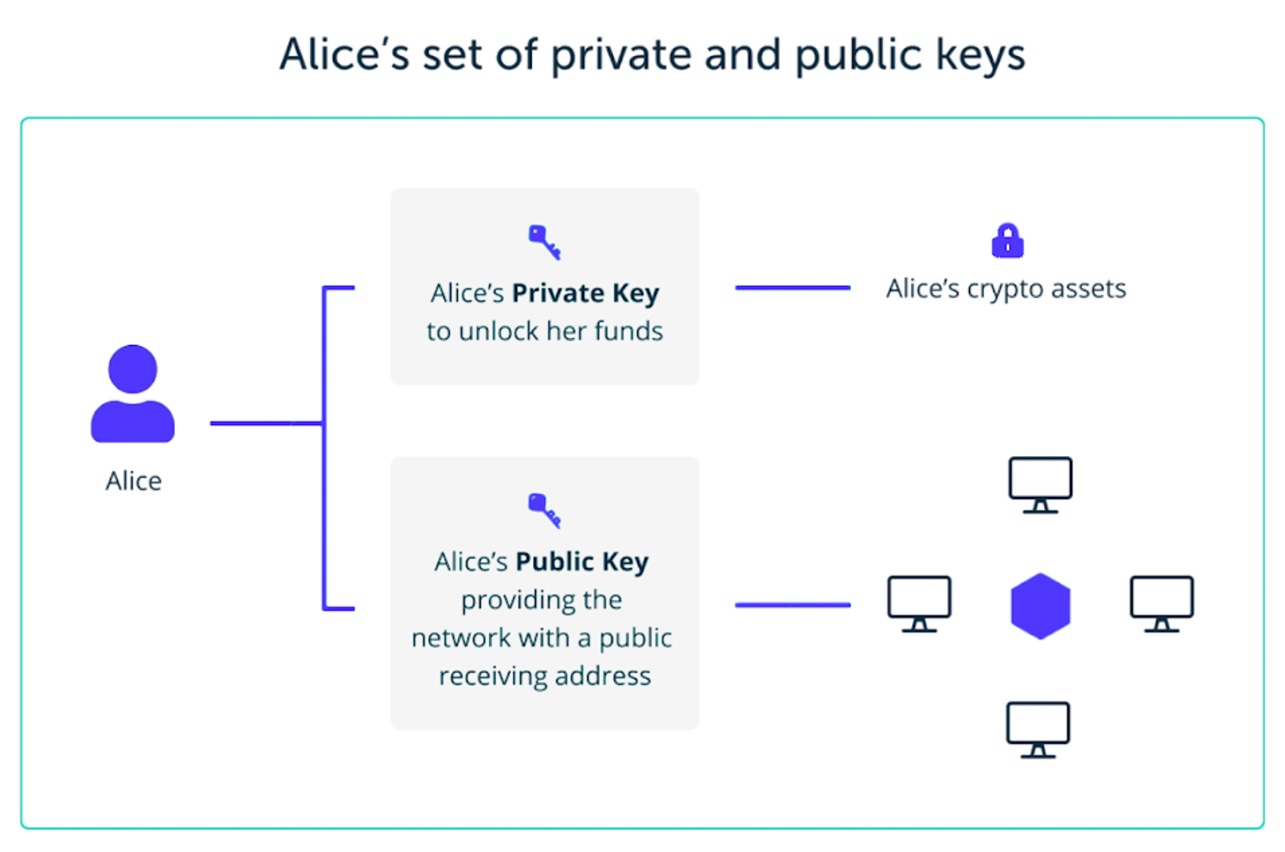Wallets
Wallet example:

The Wallet Structure
When it comes to crypto, there is no tangibility such as with fiat currencies or commodities. It’s fully digital. To allow for a secure network, cryptocurrencies work based on a double system of Private Key and a Public Key (address).

Wallet components
- Mnemonic: Often referred to as a recovery or seed phrase. It contains 12-24 keywords whose sequence provides access to the user’s Private Keys. This gets you access to the all funds stored within the wallet.
- Derivation Path: Defines how PrivateKeys and Addresses are generated. Wallet providers may choose different Derivation paths. This is usually predefined for each wallet provider.
- Extended Public Key: The XPUB is the master Public Key of an account. All public addresses of a wallet are generated from an XPUB, which is why you should handle it with caution to protect your privacy.
- Index: Allows you to find the specific Public Key (address) and its associated Private Key within a Mnemonic.
- The Public Key (address): is a public blockchain address that any user in the network can send or receive crypto to. It would be similar to your bank account number, such as IBAN or SWIFT, or your email address.
- The Private Key: Linked to your public key. This one is comparable to an actual key as it unlocks the right for its owner to access and spend the associated cryptocurrencies.
- Your private key is yours and only yours, and should therefore remain private.
- Anyone who has access to the private key can also access the funds.
- Your private key would be similar to your bank account password. Sharing your private key would be like sharing your online banking password or credit card pin.
Good to Know
- It’s possible to use the same mnemonic across chains. The derivation path, XPUB, and the index will determine how and what Addresses and PrivateKeys are generated.
- Additional information on Tatum's derivation path is available in the following article.
- The goal of public and private keys is to prove that a spent transaction was indeed signed by the owner of the funds, and was not forged.
- When you own cryptocurrencies, what you really own is a “Private Key.” Private keys allow you to authorize transactions, sending funds from one address to another. Since it provides access to your cryptocurrencies, it should remain private.
- If you lose your Private Keys, the only way to recover them is with the Mnemonic. If you lose the Mnemoenic, recovery is not possible.

Updated 27 days ago